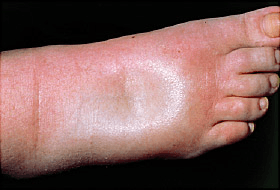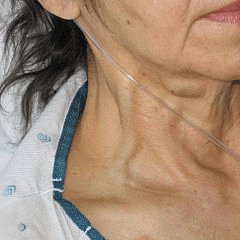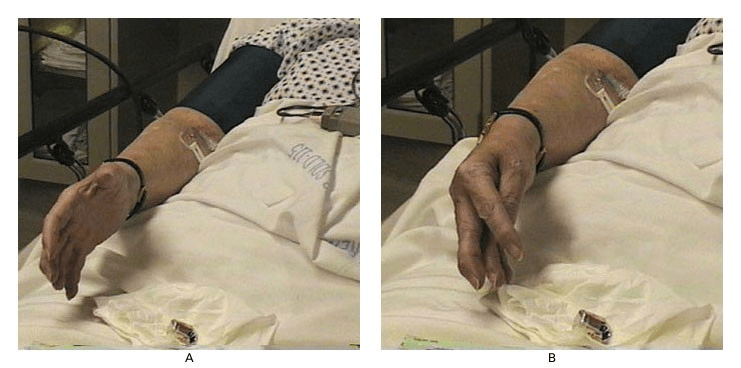Electrolytes
Potassium (K)
3.5-5
Fluid inside the cell is referred to as
Intracellular
What are symptoms of HYPOcalcemia
•T: Trousseau’s sign
•Flexion of wrist and thumb
•C: Chvostek’s sign
•Twitching of facial muscles
•Diarrhea
•Facial tingling
•Laryngeal stridor- harsh grating sound do to the larynx collapsing (priority!)
What main food is rich in potassium
BANNNANAS
Nursing Interventions for FVE
•Weigh patient daily
•Intake and Output
•Elevate HOB
•Restricting the patients fluid/ sodium (where sodium goes, fluid flows!)
Sodium (Na)
135-145
Name the best way to assess fluid gain and loss.
Daily Weights
•EKG changes
•Hypotension, bradycardia
•Diarrhea/ hyperactive bowel sounds
•Paralysis and profound muscle weakness or heavy feeling
What would FVE look like?
•Crackles
•SOB
•JVD
•Pitting edema
•Weight gain
Nursing interventions for FVD
•Monitor I’s and O’s
•Implement fall precautions
Calcium (Ca)
8.5-10.5
What is this called?

Pitting Edema
What are symptoms of HYPOnatremia
•Seizures and coma
•Tachycardia and weak thread pulses
•Reparatory arrest
What would FVD look like?
•Hypotension (check orthostatics!)
•Tachypnea
•Tachycardia
•Weak thread pulses
•Prolonged cap refill
•Oliguria (less urine output)
This finding is associated with what fluid volume disturbance?

Fluid volume overload
Magnesium (Mg)
1.8-3.6
Muscle holds on to
Water
What are symptoms of HYPOkalemia
•Muscle cramping
•Constipation, abdominal distention/ hypoactive bowel sounds
•Paralytic ileus
To test for this problem of hypocalcemia, the healthcare provider taps on the patient’s facial nerve in from of the ear. A positive response indicating hypocalemia will be a spasm of the side of face back towards the ear showing increased neuromuscular irritability
Chvostek’s sign
This finding may indicate which electrolyte abnormality?

Hypocalcemia
Human body is made up of?
60-70% fluid
Name the 4 organs that fluids are lost
•Kidneys
•Skin
•Lungs
•GI tract
What are symptoms of HYPERnatremia
•Flushed (red and rosy skin)
•Edema
•Polydipsia (excess thirst)
•Nausea and vomiting
When you took your patient's blood pressure, you noticed flexion of his wrist and fingers. What electrolyte imbalance does your patient have?
Hypocalcemia
Name the primary concern with potassium imbalance.
What is cardiac dysrhythmias and cardiac arrest